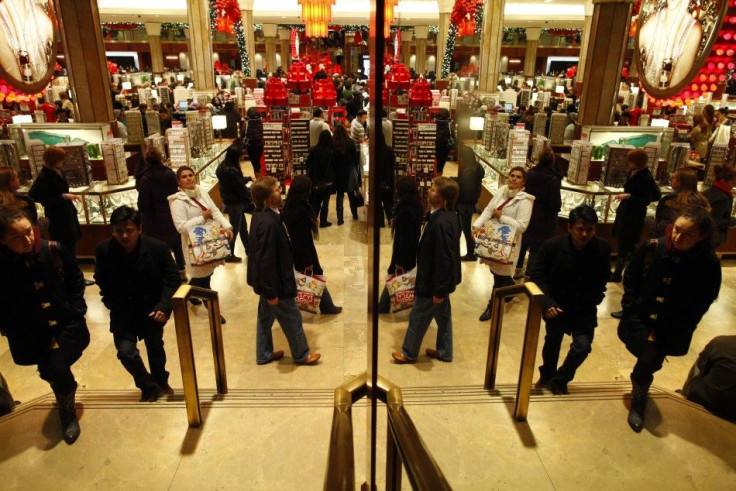US E-Commerce Growth Slows, As International E-Commerce Growth Booms, Especially In Russia, Middle East, Australia

The international e-commerce market, from 2012 to 2017, will expand more than twice as fast as the U.S. e-commerce retail industry will expand, according to retail specialists and market research.
Market intelligence firm International Data Corporation (IDC) has projected that global e-commerce sales for physical goods, like clothes and consumer electronics, will grow 18 percent annually on average over that period, outpacing U.S. growth of 7 percent.
The figures don’t include online sales of items like movie tickets, software or travel bookings.
U.S. retailers have been slow to capitalize on the overseas e-commerce market, according to Michael DeSimone, CEO of Borderfree, an international e-commerce strategist, who estimates that over a third of U.S. retailers are failing to tap that market.
Russia and Australia are two attractive markets, alongside the Middle East, according to Borderfree data. In other strongholds, like Hong Kong and Singapore, richer shoppers are already well aware of U.S. retailers and exploit websites to buy distinctly American brands, like the privately held J. Crew Group, Inc.
Shoppers in the Middle East tend to buy double what shoppers elsewhere pay, per single order, and lean toward luxury items. E-commerce in the Middle East is growing twice as fast as other markets, according to Borderfree data.
Macy’s Inc. (NYSE:M), Saks Inc (NYSE:SKS), or Saks Fifth Avenue and J. Crew are among U.S. companies expanding the fastest in international e-commerce, DeSimone told International Business Times in a phone interview. The three companies are among his clients, for whom he handles shipping, customs and currency payments.
“There are a lot of countries well below the U.S. in terms of e-commerce as a sales channel,” DeSimone said. “Brands can step into this white space and create their brand through their e-commerce channel.”
According to April 2013 Citigroup Inc. (NYSE:C) research, certain sectors like European luxury retailers and South African retailers haven’t yet fully embraced e-commerce, even as digital leanings are taken as marks of industry leadership elsewhere.
Citi analysts forecast then that online sales would hit $1.3 trillion globally in 2013. China is expected to drive growth, with Chinese Internet shoppers nearly doubling from 2012 to 2016. The rest of Asia-Pacific and Brazil are also bright spots for e-commerce expansion.
Part of the e-commerce push is led by virtual traffic from mobile phones, not standard desktop computers, added DeSimone.
“Mobile commerce might be one of the largest factors for e-commerce growth,” said DeSimone, highlighting Indian, Chinese and Brazilian consumers who may lack traditional terminals.
“They have a relationship with a mobile carrier who has to get paid, and that increasingly gives them the power to buy online,” even if they lack credit cards, he said.
IPhones are the device of choice for mobile shoppers, according to recent International Business Machines Corp. (NYSE:IBM) data, with Android devices vying to catch up.
But currency volatility and the sheer logistical headache of selling overseas are two key barriers to entering overseas e-commerce.
“It’s very foreign to them,” said DeSimone, of the nightmare U.S. retailers sometimes face selling abroad. “There are a number of challenges that are not simple to solve,” he said, citing import-export, shipping and currency challenges.
Foreign exchange volatility, especially when the U.S. dollar strengthens, or when currencies fluctuate more than 5 percent to 10 percent, as they did in emerging markets this summer, can also dampen consumer appetite.
Still, U.S. retailers like Macy’s, Urban Outfitters Inc. (NASDAQ:URBN), and furniture retailer Williams-Sonoma Inc. (NYSE:WSM) are making a go of it. The three were among companies described as e-commerce “all-stars” by Citi earlier this year.
Other brands, like the luxury name Neiman Marcus, launched international shipping in 2012, expanding their existing e-commerce sales of $1 billion, and invested in foreign e-commerce retailers, according to the company prospectus.
Internationally, Hong Kong’s answer to Amazon.com Inc. (NASDAQ:AMZN), Alibaba Group Holding Limited is expected to go public in coming months, in a keenly anticipated offering worth far more than Facebook Inc. (NASDAQ:FB) and Twitter’s public launches.
According to Euromonitor International statistics, e-retailers already lead the way in Asia, led by national powerhouses like Japan’s Rakuten Inc. (TYO:4755), alongside global American brands like eBay Inc. (NASDAQ:EBAY) and Apple Inc. (NASDAQ:AAPL)
© Copyright IBTimes 2024. All rights reserved.






















